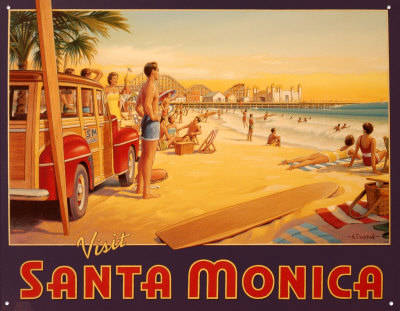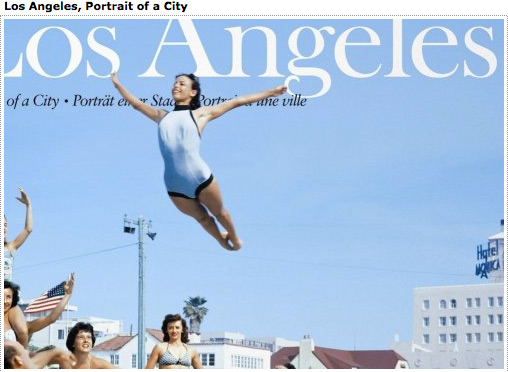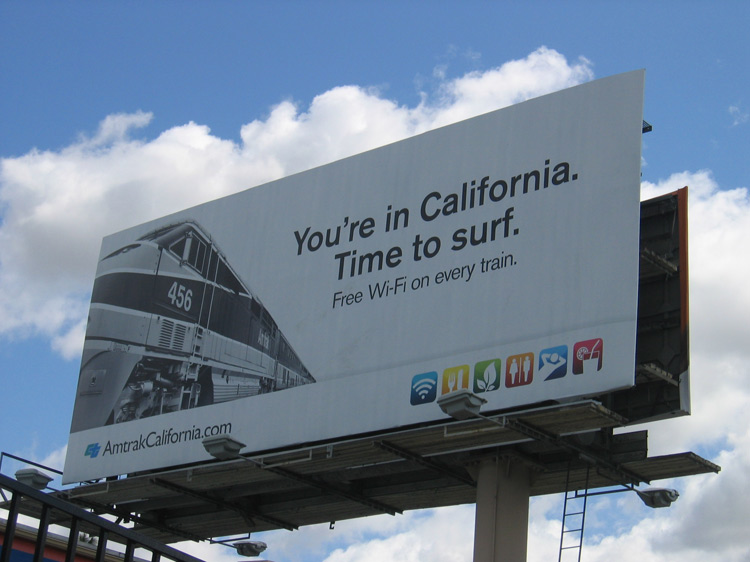California Coast
 |
 |
 |
 |
Santa HarMonica - Scars of Summer
|
||
Whachu talkin bout, Wilshire? Beach breezes, tanning on restful sand, refreshing swimming and surfing, all to "the" music. The Beach Boys, Jan & Dean enveloped us in social anthems: "Everybody's gone surfin' Surfin' USA..."
"Two girls for every boy!
Surf City, here we come..." When we weren't believing and singing along, we swam in the bold guitar instrumentals of Dick Dale, the Ventures, Safaris, Chantays.
We worshiped in the temple of twang. How universal was this yearning? Well, the film "American Graffiti," a grad night teen melodrama, was staged in Modesto, 300 miles from the shore. Yet the film's closure was marked by the exuberance of the Beach Boys': "Tshirts, cutoffs and a pair of thongs, We've been havin' fun all summer long." "The beach" touched even California's Central Valley. ~~~~~~~~ So what did "the beach" mean to you?
For me, its was and remains an iconic reference point.
In particular I dwelt on the beaches from Santa Monica northward, including Sorrento, Malibu to Zuma beyond Point Dume.
I also loved to drive the serpentine roads that ascend the Santa Monica Mountains, affording vast views of the Bay's splendor.
How major is the beach? Well, the California Coastal Commission's chief mandate is to assure public access to the beach and ocean, even when it means building pathways next to million dollar mansions, all to assure that average citizens can enjoy the wave zone (providing they don't wander on to private property, which is usually heavily gated now any way). No American fantasized about visiting Portland's or Seattle's prolonged months of gloom, but the Mama's & Papa's California Dreamed On such a winter's day" of returning to L.A., while Randy Newman rhapsodized in "I Love LA" about leaving rough and dismal Chicago, "turning up the beach Boys, and rolling down the top." Beaches harbor amusement parks, and in Los Angeles there were many, including Pacific Ocean Park, south of the Santa Monica Pier, and within the SM City limits. This park did not need to borrow Disneyland's thunder, because it possessed one ingredient that the Anaheim extravaganza could not: rides above a real ocean. |
||
| Links: | ||
| 1 bay, 5 piers | ||
| Santa Monica Pier with Ocean Park Pier & Amusement Park Beyond | ||
| Kam Nelson, 9th Street West and the Go-Go Sixties | ||
Santa Monica Mountains - The Canyons |
||
| © Derrick Garbell 1941 - 2014, except where noted. All Rights Reserved Updated 4 November 2014 |
||
| Garbell home |